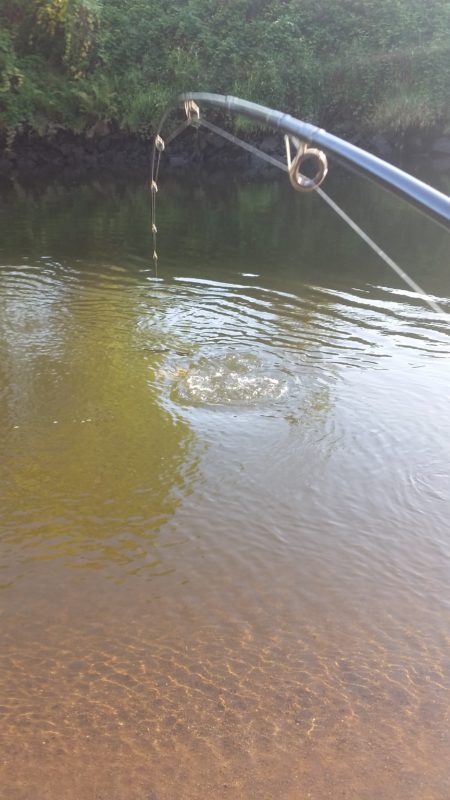Thoughts On Fishing For Pink Salmon In A Warm River
I can’t say that I’ve reached zen hookless fly fishing master copacetic status yet — that’s a whole lot more meditation and holistic consciousness away for this Coug.

But with water temperatures running in the less-than-salmon-friendly mid-60-degree-range on Seattle’s Duwamish River this week, I’ve been trying to be mindful of how long I’ve played and how long I’ve fished for humpies the last few days.
I will admit that that statement was only partially true on Monday, after I’d returned from a weeklong vacation in Northeast Washington and lost track of how many I hooked in a 40-minute midday sesh that brought back memories of a truly preposterous day on the Snohomish in 2001.
“Amy! Bring the boys down! We will slay!” I told my wife.
Then I googled the USGS gauge for the golf course in Tukwila and saw how warm the water really was and started thinking that maybe I didn’t need to play fish that I was catching and releasing that long.
Not that I was.
I mean, I’ve been all business down there on the banks of the muddy DGR with my converted plunking rod and reel and .99-cent Sportsman’s Warehouse humpy jig.
My mainline looks like it might hold horses to hitching posts at the Republic-area guest ranch we enjoyed a trail ride at last week.
After all, the faster you bring a fish in or it successfully throws the hook, the faster you can take another cast for ’em. It’s a numbers game.
These are beautiful pinks too.
Silver-bright bucks and hens.
Fat, fat, fat.
Studs and egg wagons.
The kind of fish that will really, really, realllllllly help rebuild a run that was hurt by The Blob.
(Please, please, Mother Nature, hold off on your super-soaker fall atmospheric rivers this fall, please.)
I don’t know that I ever — EVER — considered water temperature effects on salmon health before 2015 hit Columbia sockeye hard and a quarter million fish just … vanished without a trace.
It was more like catch-and-release all day long.
Advice from a fisheries biologist I sent a message to today about my moral dilemma of whether to fish for pinks in 66-degree water during my lunchbreak: Don’t.
But at the same time, they allowed the river IS open for retention of pinks because there IS a harvestable surplus of them, and that assumes some loss from C&R mortality.
For those of us without boats and are largely or entirely left on the bank, this is our time to shine.
So in the mental battle between conserving the resource for the future and the saying on the NSIA T-shirt I wear — “The tug is the drug” — I’m opting for the former with a good dash of the latter.
The hook on my jig is bent at an angle I wouldn’t tolerate if I was fishing for Chinook, coho, steelhead or any other species.
It’s pinched though it wouldn’t be if I was fishing for the table.
The past few days I’ve enjoyed watching pinks at my feet slash and take swipes at my twitched jig, pulling it away from some, letting others take it.
I give hooked fish a head turn or three or four to show me their stuff, then purposefully slacken the line or change its angle in hopes the debarbed point pulls out. Less stress equals higher survival to spawning.
It works for most, though not all; some I have to haul to shore to give the hook a quick twist before sending the fish on their way to the gravel.
It’s fun and all, and I have a deep, abiding love of this unloved, scoffed-at species and what it represents, but I’ll also soon get bored and turn to Chinook and coho.
Maybe if I was more enlightened, I would stay off the river all together till it cools back into the 50s.
Or just clip the hook off at the bend in the shank and count coup with every line pull.
But I have a ways to go to attain that level of coexistence and harmony with the salmonverse.
Om mani padme hu-there’s one!
Also, it’s very, very, very difficult to turn your back on a river full of snappy fish.
God, is it ever.
Get a Free NewsLetter Here
[hubspot type=form portal=5325588 id=614ee0f1-9297-4340-b0f4-5b40dfd45220]

